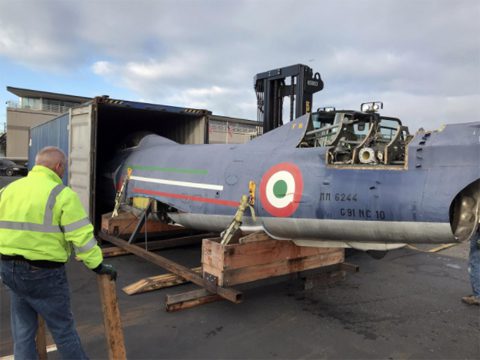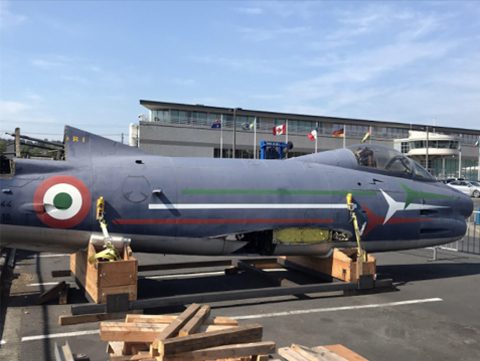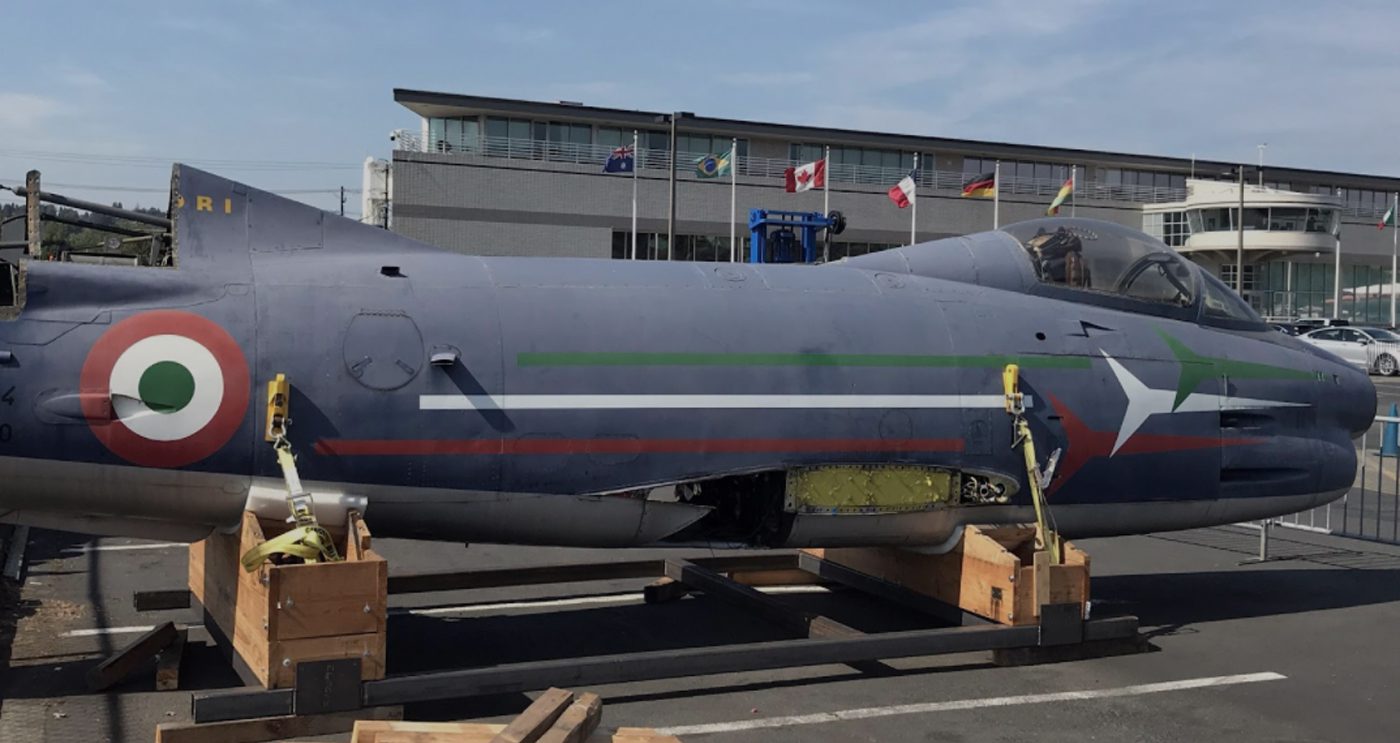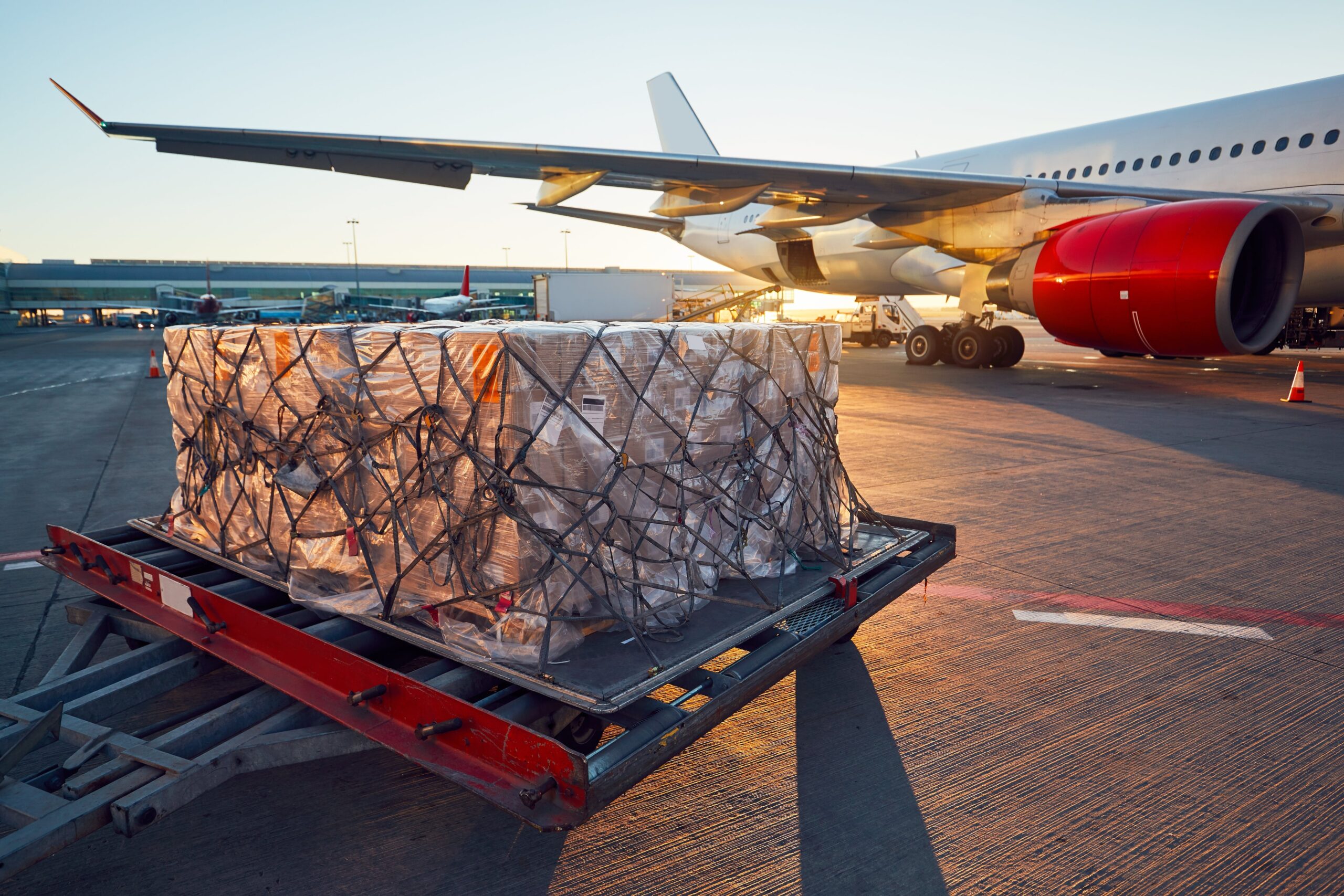It all fell into place because everyone worked together through their back channels to make the project a success. I will highly recommend Vector with no hesitation.
Navigating the Pandemic to Safely Deliver a Piece of Aviation History

Every Vector project comes with its own set of unique challenges and characteristics. One of the most interesting was a recent shipment of a Fiat G.91 PAN Italian aerobatic plane from The Museum of Flight in Seattle, Washington, USA, all the way to the Volandia Museum just north of Milan, Italy.
During the regular shipment of such an exciting package, the coordination of project logistics would take a few phone calls and careful shipping by an expert team, and then off the plane would go to its new home. However, this entire process took place right in the middle of the global COVID-19 pandemic when shipping ports and truck drivers were practically at a standstill. Not only did Vector find a way to ensure the safe delivery of this historical item, but we also did it in record time when so many other companies were facing roadblock after roadblock.
Seattle Had an Italian Plane?

Part of what makes this aviation shipment case study stand out is the cargo. This was a Fiat G.91 PAN with an incredible past. It initially flew with the Italian Air Force for 8 years before being transferred to the Frecce Tricolori (Tricolor Arrows) in 1966, where it served as an aerial demonstration team like America’s Blue Angels and Thunderbirds, the Canadian Snowbirds, or the Japanese Blue Impulse and White Arrows. As an aerobatic squadron, the Frecce Tricolori served in a non-combat role.
The plane was a gate guard from 1988 to early 1990, then sent to the US Intrepid Museum based in New York City’s harbor where it stayed until finding a home in The Museum of Flight in Seattle in late 1990. For years the plane was on display both inside and outside the museum, until they realized it would be better placed with similar aeronautical elements, and they then reached out to the Volandia museum.
When expertise and collaboration meet to coordinate a complex logistics project

For close to four months, The Museum of Flight in Seattle used 3D modeling and engineering to construct a one-of-a-kind cradle that could carry the entire plane in a 40-foot shipping container. They kept the fuselage intact but removed the wings, pylons, drop tanks, wheels, and horizontal stabilizers into specially designed wooden cradles that sat on a metal framework. Also, a local collaborator joined by helping to load and move the plane safely into the shipping container with one of their heavy-weight forklifts.
At this point, the Volandia Museum and The Museum of Flight utilized Vector’s project logistics services, and we couldn’t have been more excited by this opportunity. This was one of those rare opportunities to deliver a piece of history back to its original home during a crisis that required all of our expertise, network of agents, and professional insight to get the job done on time and intact.
The Port Challenge
While the fantastic staff at The Museum of Flight did all the packing, it was up to us to figure out solutions for actual shipping. The first problem arose when we contacted the Seattle port and discovered nothing was moving due to an influx of Asian goods. That meant we needed to find an open port in the US to take on our aviation shipping challenge. We found success in Norfolk, Virginia.
We had to somehow get a plane across the entire width of the United States to a different port within a shrinking timeframe as the world began to realize the movement of goods was at a standstill. We must have called every connection we could find to locate a trucking company that would take our plane from Seattle to a train connection and then from the train to the French shipping vessel in Norfolk. It was through our team’s persistence and ability to think outside the box that we found one such company.
Once the container was en route, we went into redundancy mode to discover every secondary plan possible in case the constraints of the virus outbreak would slow or freeze our aviation shipment. This is the type of logistics challenge we love to solve: the kind of puzzle that showcases our team’s ability to plan, adapt, and deliver regardless of the complexity of the project.
An Antiquity Safe at Home Again!
By coordinating numerous schedules with two museum clients and a world of support staff, Vector was able to safely ensure the delivery of a piece of aviation history for future generations to enjoy. It only took a few weeks from picking up in Seattle to delivery in Italy before the museum team restored the plane to its former glory. Currently, the Fiat former member of the Frecce Tricolori sits proudly inside Volandia’s hallowed halls for the public to admire.
What started as a simple journey led to an across-the-world coordination of air, land, and sea by a group of determined professionals. The total trip required over 5,500 miles of travel across multiple international boundaries before reaching the largest park and museum of flight in Europe.
Project Logistics Expertise
Gratifying projects like this plane’s journey are only a tiny sliver of the vast enterprise and supply chain planning performed by Vector Global Logistics. When you need experience, connections, and expertise to get your next project delivered on-time and intact, you can trust us.
At Vector, we have been changing the world through supply chain for over a decade. Our unique, results-based culture is relationship-focused and dedicated to providing creative, efficient, and cost-effective solutions for amazing clients like you. We carefully ship the products you care about from point A to point B, while also making a positive impact on our global community.
Learn more about how your complex logistics needs are made simple.





